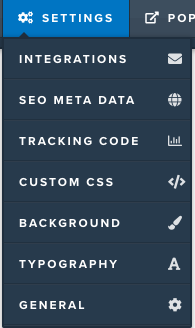How To Fire The Facebook Lead Pixel in Click Funnels
So you want to Fire the “Lead” Facebook Pixel in Click Funnels without being able to place the pixel on the advertiser’s page?
Without tracking your data, you cannot run a profitable online campaign.
Tracking the data of any advertisement lets you know objectively the working and non-working parts of the advertisements.
This includes the ads that are working well, landing pages with better response, targeting that converts the best.
These numbers are the necessary compass that gives the advertisement the right direction.
There are 3 ways of tracking a campaign
- Manual method using SUBDID’s.
- Tracking solution such as Voluum.
- Install a pixel.
There is the option of customizing it to figure out the traffic sources using a piece of code.
Chances are that you don’t have direct access to the advertiser’s thank you page.
Typically, you send the code to the advertiser or to your affiliate manager, who then places the code onto their website for you.

In affiliate marketing it’s important to track all stages of the funnel in order to see what is working and what is not.
You can try to convince the advertiser to allow you to add the pixel of your own, but some of them are unyielding.
Here are three ways of going around the advertiser to have accurate data about the advertisements.
To understand the options, you will first have to understand the Pixel ladders.
Before reaching the “Thank-You” page, a person follows several steps.
The first step is coming to the landing page where the user views the content.
Then, adding the ‘object of desire’ to the cart.
Afterward, initiating checkout, and finally, making the purchase.
All of these steps will only be performed by people interested in the product.
Arguably, a user who just came to the landing page is the weakest spot whereas someone who initiated the checkout is a much better lead.
A ‘conversion’ can include any of these steps.
Here is a model of the e-commerce funnel.

It would be great to have a pixel full of purchase conversions.
However, scarcely do the purchasers move through all the steps, and make the purchase.
This is especially true for products that cost a lot more.
Also, a huge sum of money will be needed to sell more expensive products.
Choosing to run campaigns based on earlier actions has great returns.
Targeting people who added the objects to cart or initiated a checkout are interested in the product and will buy the same if they are pushed for it.
If the advertiser does not allow you to add the Pixel to the thank you page, you can work around it by placing the pixel in one of the steps before the purchase.
![]()
For instance, a person comes to the landing page that contains a range of affiliate links.
Now, instead of the affiliate link, add a redirect code.
This fairly simple page will have a redirect code like:
<meta http-equiv="refresh" content="5;url=http://example.com/">
This redirect code will take the user to your server and will probably read something like this “ yourdomain.com/link.php”.
The benefit of using this method is that it will not be seen by the end-user as the individual will be redirected to the offer page.
Here is how to set it up in Click Funnels: (With a Video As Well)
Step 1: Make a White Page (Blank Page)

Step 2: Go to Tracking Code Section of the blank page

Step 3: Add the Facebook “Lead” Pixel and the Redirect code from above to the Tracking Section of the blank page

You will have the information as this mid-page or “white page” between the landing and the offer page has the pixel that will register the activity.

This is the place where you get to know the people who are interested in your product or service.
These individuals came across the landing page and clicked to visit the offer page, which clearly states that they are interested in the product.
This method will give Facebook the information they need to optimize the campaign better.
Tip of the day: Add a quiz or survey in the mix.
If a user is willing to spend the time to fill the survey, then he is a high-quality lead.
Wrapping it up
Here, the primary focus is on the Pixel and a way around the advertisers to get the information you need.
However, the overarching theme of the article is that every affiliate marketer will come across several problems during the working hours where other people will not have an answer.
You will have to figure it out as you go along and keep at it till you figure it out.
An affiliate marketer is a problem solver first.
Would you like to learn affiliate marketing for FREE? Check out my FREE COURSE HERE









